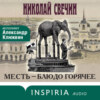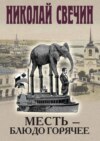Читать книгу: «Flagg's The Far West, 1836-1837, part 1»
PREFACE TO VOLUMES XXVI-XXVII
These two volumes are devoted to reprints of Edmund Flagg's The Far West (New York, 1838), and Father Pierre Jean de Smet's Letters and Sketches, with a Narrative of a Year's Residence among the Indian Tribes of the Rocky Mountains (Philadelphia, 1843). Flagg's two-volume work occupies all of our volume xxvi and the first part of volume xxvii, the remaining portion of the latter being given to De Smet's book.
Edmund Flagg was prominent among early American prose writers, and also ranked high among our minor poets. A descendant of the Thomas Flagg who came to Boston from England, in 1637, Edmund was born November 24, 1815, at Wescasset, Maine. Being graduated with distinction from Bowdoin College in 1835, in the same year he went with his mother and sister Lucy to Louisville, Kentucky. Here, in a private school, he taught the classics to a group of boys, and contributed articles to the Louisville Journal, a paper with which he was intermittently connected, either as editorial writer or correspondent, until 1861.
The summer and autumn of 1836 found Flagg travelling in Missouri and Illinois, and writing for the Journal the letters which were later revised and enlarged to form The Far West, herein reprinted. Tarrying at St. Louis in the autumn of 1836, our author began the study of law, and the following year was admitted to the bar; but in 1838 he returned to newspaper life, taking charge for a time of the St. Louis Commercial Bulletin. During the winter of 1838-39 he assisted George D. Prentice, founder of the Louisville Journal, in the work of editing the Louisville Literary News Letter. Finding, however, that newspaper work overtaxed his health, Flagg next accepted an invitation to enter the law office of Sergeant S. Prentiss at Vicksburg, Mississippi, where in addition to his legal duties he found time to edit the Vicksburg Whig. Having been wounded in a duel with James Hagan of the Sentinel in that city, Flagg returned to the less excitable North and undertook editorial duties upon the Gazette at Marietta, Ohio (1842-43), and later (1844-45) upon the St. Louis Evening Gazette. He also served as official reporter of the Missouri state constitutional convention the following year, and published a volume of its debates; subsequently (until 1849) acting as a court reporter in St. Louis.
The three succeeding years were spent abroad; first as secretary to Edward A. Hannegan, United States minister to Berlin, and later as consul at Venice. In February, 1852, he returned to America, and during the presidential campaign of that year edited a Democratic journal at St. Louis, known as the Daily Times. Later, as a reward for political service, he was made superintendent of statistics in the department of state, at Washington – a bureau having special charge of commercial relations. Here he was especially concerned with the compilation of reports on immigration and the cotton and tobacco trade, and published a Report on Commercial Relations of the United States with all Foreign Nations (4 vols., Washington, 1858). Through these reports, particularly the last named, Flagg's name became familiar to merchants in both the United States and Europe. From 1857 to 1860 he was Washington correspondent for several Western newspapers, and from 1861 to 1870 served as librarian of copyrights in the department of the interior. Having in 1862 married Kate Adeline, daughter of Sidney S. Gallaher, of Virginia, he moved to Highland View in that state (1870), and died there November 1, 1890.
In addition to his labors in the public service and as a newspaper man, Flagg found time for higher literary work, and won considerable distinction in that field. His first book, The Far West, although somewhat stilted in style, possesses considerable literary merit. Encouraged by the success of his initial endeavor, he wrote the following year (1839) the Duchess of Ferrara and Beatrice of Padua, two novels, each of which passed through at least two editions. The Howard Queen (1848) and Blanche of Artois (1850) were prize productions. De Molai (1888), says the New York Sun of the period, is "a powerful, dramatic tale which seems to catch the very spirit of the age of Philip of France. It is rare to find a story in which fact and invention are so evenly and adroitly balanced." Our author also wrote several dramas, which were staged in Louisville, Cincinnati, St. Louis, and New York; he also composed numerous poems for newspapers and magazines. His masterpiece, however, was a history dedicated to his lifelong friend and colleague, George D. Prentice, entitled The City of the Sea (2 vols., New York, 1853). This work was declared by the Knickerbocker to be "a carefully compiled, poetically-written digest of the history of the glorious old Venice – a passionate, thrilling, yet accurate and sympathetic account of the last struggle for independence." At the time of his death Flagg had in preparation a volume of reminiscences, developed from a diary kept during forty years, but this has never been published.1
"In hope of renovating the energies of a shattered constitution," we are told, Flagg started in the early part of June, 1836, on a journey to what was then known as the Far West. Taking a steamboat at Louisville, he went to St. Louis by way of the Ohio and the Mississippi, and after a brief delay ascended the latter to the mouth of the Illinois, and thence on to Peoria. Prevented by low water from proceeding farther, he returned by the same route to St. Louis, whence after three weeks' stay, spent either in the sick chamber or in making short trips about the city and its environs, the traveller crossed the Mississippi and struck out on horseback across the Illinois prairies, visiting Edwardsville, Alton, Carlinsville, Hillsborough, Carlisle, Lebanon, Belleville, and the American Bottoms. In July, after recrossing the Mississippi, he visited in like manner St. Charles, Missouri, by way of Bellefontaine and Florissant; crossed the Mississippi near Portage des Sioux, and passed through the Illinois towns of Grafton, Carrollton, Manchester, Jacksonville, Springfield, across Grand Prairie to Shelbyville, Mount Vernon, Pinkneyville, and Chester, and returned to St. Louis by way of the old French settlements of Kaskaskia, Prairie du Rocher, and Cahokia.
During this journey Flagg wrote for the Louisville Journal, as already stated, a series of letters describing the country through which he travelled. Hastily thrown together from the pages of his note book, this correspondence appeared anonymously under the title, "Sketches of a Traveller." They were, however, soon attributed to Flagg, and two years later were collected by the author and published in two small volumes by Harper and Brothers (New York, 1838), as The Far West. These volumes are in many respects the best description of the Middle West that had appeared up to the time they were written. Roughly following the journals of Michaux, Harris, and Cuming by forty, thirty, and twenty years respectively, Flagg skillfully shows the remarkable growth and development of the Western country. His descriptions of the Ohio, Mississippi, and Illinois rivers are still among the best in print, particularly from the artistic standpoint. His account of the steamboat traffic is valuable for the history of navigation on the Western rivers, and shows vividly the obstacles which still confronted merchants of that time. Chapters xi, xii, and xiii, dealing with St. Louis and its immediate vicinity, are the most detailed in our series, while the descriptions of St. Charles and the Illinois towns through which Flagg passed, are excellent.
The modern reader cannot but wish that Flagg had devoted less space to his youthful philosophizing, but the atmosphere is at least wholesome. Unlike Harris, whose criticism of Western society was keen and acrid, Flagg was a man of broad sympathies, possessing an insight into human nature remarkable for so youthful a writer – for he was but twenty years of age at the time of his travels, and twenty-two when the book was published. Although mildly reproving the old French settlers for their lack of enterprise, he fully appreciates their domestic virtues, and gives a faithful picture of these pleasure-loving, contented, unprogressive people. His description of the once thriving villages of Kaskaskia, Prairie du Rocher, and Cahokia, are valuable historically, as showing the decay settling upon the French civilization after a few years of American occupation. Our author's interview with the Mormon convert, his conversations with early French and American settlers, his accounts of political meetings, his anecdotes illustrating Western curiosity, and particularly his carefully-recounted local traditions, throw much light on the beliefs, manners, and customs of the Western people of his time. The Far West is thus not only a graphic and often forceful description of the interesting region through which the author travelled, but a sympathetic synopsis of its local annals, affording much varied information not otherwise obtainable. The present reprint, with annotations that seek to correct its errors, will, we think, prove welcome in our series.
In the Letters and Sketches of Father de Smet, we reprint another Western classic, related to the volumes of Flagg by their common terminus of travel at St. Louis.
No more interesting or picturesque episode has occurred in the history of Christian missions in the New World, than the famous visit made in the autumn of 1831 to General William Clark at St. Louis by the Flathead chiefs seeking religious instruction for their people. Vigorously exploited in the denominational papers of the East, this delegation aroused a sentiment that led to the founding of Protestant missions in Oregon and western Idaho, and incidentally to the solution of the Oregon question. But in point of fact, the Flathead deputation was sent to secure a Catholic missionary; and not merely one but four such embassies embarked for St. Louis before the great desideratum, a "black robe" priest, could be secured for ministration to this far-distant tribe. Employed in the Columbian fur-trade were a number of Christian Iroquois from Canada, who had been carefully trained at St. Regis and Caughnawaga in all the observances of the Roman Catholic church. Upon the Pacific waterways and in the fastnesses of the Rockies, these Iroquois taught their fellow Indians the ordinances of the church and the commands of the white man's Great Spirit. John Wyeth (see our volume xxi) testifies to the honesty and humanity of the Flathead tribe: "they do not lie, steal, nor rob any one, unless when driven too near to starvation." He also testifies that they "appear to keep the Sabbath;" and that their word is "as good as the Bible." These were the neophytes who craved instruction, and to whom was assigned that remarkable Jesuit missionary, Father Jean Pierre de Smet.
Born in Belgium in 1801, young De Smet was educated in a religious school at Malines. When twenty years of age he responded to an appeal to cross the Atlantic and carry the gospel to the red men of the Western continent. Arrived in Philadelphia (1821), the young Belgian was astonished to see a well-built town, travelled roads, cultivated farms, and other appurtenances of civilization; he had expected only a wilderness and savages. Two years were spent in the Jesuit novitiate in Maryland, before the zealous youth saw any traces of frontier life. Then the youthful novice was removed to Florissant, Missouri, not far from St. Louis, where the making of a log-cabin and the breaking of fresh soil furnished a mild foretaste of his future career. Still more years elapsed before the cherished project of missionary labor could be realized. In 1829 St. Louis University was founded, and herein the young priest, who had been ordained in 1827, was employed upon the instructional force. Later years (1833-37) were spent in Europe, while recruiting his health and securing supplies for the infant university. It was not until 1838 that the first missionary enterprise was undertaken by Father de Smet, when a chapel for the Potawatomi was built on the site of the modern Council Bluffs. There, in 1839, the fourth Flathead deputation rested after the long journey from their Rocky Mountain home; and at the earnest solicitation of the young missioner, he was in the spring of 1840, detailed by his superior to ascertain and report upon the prospects of a mission to the mountain Indians.
Of the two tribesmen who had come down to St. Louis, Pierre the Left-handed (Gaucher) was sent back to his people with news of the success of the embassy, while his colleague Ignace was detained to serve as guide to the adventurous Jesuit who in April, 1840, set forth for the Flathead country with the annual fur-trade caravan. The route traversed was the well-known Oregon Trail as far as the Green River rendezvous; there the father was rejoiced to meet a deputation of ten Flatheads, sent to escort him to their habitat, and at Prairie de la Messe was celebrated for them the first mass in the Western mountains. The trail led them on through Jackson's and Pierre's Holes; and in the latter valley the waiting tribesmen to the number of sixteen hundred had collected, and received the "black robe" as a messenger from Heaven. Chants and prayers were heard on every side; "in a fortnight," reports the delighted missionary, "all knew their prayers." After two months spent among his "dear Flatheads," wandering with them across the divide, and encamping for some time at the Three Forks of the Missouri – where nearly forty years before Lewis and Clark first encountered the Western Indians – De Smet took leave of his neophytes. Protected by a strong guard through the hostile Blackfeet country, he arrived at last at the fur-trade post of Fort Union at the junction of the Missouri and the Yellowstone. Descending thence to St. Louis he arrived there on the last day of December, 1840.
The remainder of the winter was occupied in preparations for a new journey, and in securing men and supplies for the equipment of the far-away mission begun under such favorable auspices. Once more the father departed from Westport – this time in May, 1841. The little company consisted, besides himself, of two other priests and three lay brothers, all of the latter being skilled mechanics. Among the members of the caravan were a number of California pioneers, one of whom has thus related his impressions of the young missionary: "He was genial, of fine presence, and one of the saintliest men I have ever known, and I cannot wonder that the Indians were made to believe him divinely protected. He was a man of great kindness and great affability under all circumstances; nothing seemed to disturb his temper."2
Father de Smet's letters describe in detail the scenery and incidents of the route from the eastern border of Kansas to Fort Hall, in Idaho, where the British factor received the travellers with abounding hospitality. Here some of the Flatheads were in waiting to convey the missionaries to the tribe, the chiefs of which met them in Beaver Head Valley, Montana, and testified their welcome with dignified simplicity. Passing over to the waters of the Columbia, they founded the mission of St. Mary upon the first Sunday in October, in the beautiful Bitter Root valley at the site of the later Fort Owen. Thence Father de Smet made a rapid journey in search of provisions to Fort Colville, on the upper Columbia, but was again at his mission stockade before the close of the year. In April a longer journey was projected, as far as Fort Vancouver, on the lower Columbia, where Dr. McLoughlin, the British factor, received the good priest with that cordial greeting for which he was already famous. During this journey the father narrowly escaped drowning in the turbulent rapids of the Columbia, where five of his boatmen perished. Returned to St. Mary's, the prospects for a harvest of souls both among the Flatheads and the neighboring tribes appeared so promising that the missionary determined to seek re-enforcement and further aid in Europe. Thereupon he left his companions in charge of the "new Paraguay" of his hopes, and once more undertook the long and adventurous journey to the settlements, this time by way of the Yellowstone and Missouri rivers, arriving at St. Louis the last of October, 1842. At this point the journeys detailed in the volume here reprinted come to an end. The later career of Father de Smet and his subsequent journeyings will be detailed in the preface to volumes xxviii and xxix, in the latter of which will appear his Oregon Missions.
Father de Smet's writings on missionary subjects ended only with his death, and were increasingly voluminous and detailed. The Letters and Sketches were his first published work, with the exception of a portion of a compilation that appeared in 1841, on the Jesuit missions of Missouri. We find therefore, in the present reprint, the vitality and enthusiasm of the young traveller relating new scenes, and the abounding joy of the successful missionary uplifting a barbaric race. The book was written with the avowed purpose of creating interest in his newly-organized work, and securing contributions therefor. The freshness of description, the wholesome simplicity of the narrative, the frank presentation of wilderness life, charm the reader, and make this book a classic of early Western exploration. Cast in the form of letters, wherein there is more or less repetition of statement, it is nevertheless evident that these have been subjected to a certain editorial revision, and that literary quality has been considered. Aside from the interest evoked by the personality of the writer, and the events of his narrative, the work throws much light upon wilderness travel, the topography and scenery of the Rocky Mountain region, and above all upon the habits and customs, modes of thought, social standards, and religious conceptions of the important tribes of the interior.
After the present series of reprints had been planned for, and announced in a detailed prospectus, there was issued from the press of Francis P. Harper of New York the important volumes edited by Major H. M. Chittenden and Alfred Talbot Richardson, entitled Life, Letters, and Travels of Father Pierre Jean de Smet, S. J., 1801-73. This publication contains much new material, derived from manuscript sources, which has been interwoven in chronological order with the missionary's several books; and to it all have been added an adequate biography and bibliography of De Smet. This scholarly work has been of great service to us in preparing for accurate reprint the original editions of the only two of Father de Smet's publications that fall within the chronological field of our series.
In the preparation for the press of Flagg's The Far West, the Editor has had the assistance of Clarence Cory Crawford, A. M.; in editing Father de Smet's Letters and Sketches, his assistant has been Louise Phelps Kellogg, Ph.D.
R. G. T.
Madison, Wis., April, 1906.
TO THE READER
"He that writes
Or makes a feast, more certainly invites
His judges than his friends; there's not a guest
But will find something wanting or ill dress'd."
In laying before the majesty of the public a couple of volumes like the present, it has become customary for the author to disclaim in his preface all original design of perpetrating a book, as if there were even more than the admitted quantum of sinfulness in the act. Whether or not such disavowals now-a-day receive all the credence they merit, is not for the writer to say; and whether, were the prefatory asseveration, as in the present case, diametrically opposed to what it often is, the reception would be different, is even more difficult to predict. The articles imbodied in the following volumes were, a portion of them, in their original, hasty production, designed for the press; yet the author unites in the disavowal of his predecessors of all intention at that time of perpetrating a book.
In the early summer of '36, when about starting upon a ramble over the prairies of the "Far West," in hope of renovating the energies of a shattered constitution, a request was made of the writer, by the distinguished editor of the Louisville Journal, to contribute to the columns of that periodical whatever, in the course of his pilgrimage, might be deemed of sufficient interest.3 A series of articles soon after made their appearance in that paper under the title, "Sketches of a Traveller." They were, as their name purports, mere sketches from a traveller's portfeuille, hastily thrown upon paper whenever time, place, or opportunity rendered convenient; in the steamboat saloon, the inn bar-room, the log-cabin of the wilderness, or upon the venerable mound of the Western prairie. With such favour were these hasty productions received, and so extensively were they circulated, that the writer, on returning from his pilgrimage to "the shrine of health," was induced, by the solicitations of partial friends, to enter at his leisure upon the preparation for the press of a mass of MSS. of a similar character, written at the time, which had never been published; a thorough revision and enlargement of that which had appeared, united with this, it was thought, would furnish a passable volume or two upon the "Far West." Two years of residence in the West have since passed away; and the arrangement for the press of the fugitive sheets of a wanderer's sketch-book would not yet, perhaps, have been deemed of sufficient importance to warrant the necessary labour, had he not been daily reminded that his productions, whatever their merit, were already public property so far as could be the case, and at the mercy of every one who thought proper to assume paternity. "Forbearance ceased to be longer a virtue," and the result is now before the reader. But, while alluding to that aid which his labours may have rendered to others, the author would not fail fully to acknowledge his own indebtedness to those distinguished writers upon the West who have preceded him. To Peck, Hall, Flint, Wetmore, and to others, his acknowledgments are due and are respectfully tendered.4
In extenuation of the circumstance that some portions of these volumes have already appeared, though in a crude state, before the public, the author has but to suggest that many works, with which the present will not presume to compare, have made their debut on the unimposing pages of a periodical. Not to dwell upon the writings of Addison and Johnson, and other classics of British literature, several of Bulwer's most polished productions, the elaborate Essays of Elia, Wirt's British Spy, Hazlitt's Philosophical Reviews, Coleridge's Friend, most of the novels of Captain Marryatt and Theodore Hook, and many of the most elegant works of the day, have been prepared for the pages of a magazine.
And now, with no slight misgiving, does the author commit his firstborn bantling to the tender mercies of an impartial public. Criticism he does not deprecate, still less does he brave it; and farther than either is he from soliciting undue favour. Yet to the reader, as he grasps him by the hand in parting, would he commit his book, with the quaint injunction of a distinguished but eccentric old English writer upon an occasion somewhat similar:
"I exhort all people, gentle and simple, men, women, and children, to buy, to read, to extol these labours of mine. Let them not fear to defend every article; for I will bear them harmless. I have arguments good store, and can easily confute, either logically, theologically, or metaphysically, all those who oppose me."
E. F.
New-York, Oct., 1838.
Judge James Hall was born in Philadelphia (1793), and died near Cincinnati in 1868. He was a member of the Washington Guards during the War of 1812-15, was promoted to the 2nd United States artillery, and accompanied Decatur on his expedition to Algiers (1815). Resigning in 1818, he practiced law at Shawneetown, Illinois (1820-27), and filled the office of public prosecutor and judge of the circuit court. He moved to Vandalia (1827) and began editing the Illinois Intelligencer and the Illinois Monthly Magazine. From 1836 to 1853 he was president of the commercial bank at Cincinnati, and acted as state treasurer. He published: Letters from the West (London, 1828); Legends of the West (1832); Memoirs of the Public Services of General William Henry Harrison (Philadelphia, 1836); Sketches of History, Life and Manners of the West (Philadelphia, 1835); Statistics of the West at the Close of 1836 (Cincinnati, 1836); Notes on the Western States (Philadelphia, 1838); History and Biography of the Indians of North America (3 volumes, 1838-44); The West, its Soil, Surface, etc. (Cincinnati, 1848); The West, its Commerce and Navigation (Cincinnati, 1848); besides a few historical novels. For a contemporary estimate of the value of Hall's writings see American Monthly Magazine (New York, 1835), v, pp. 9-15.
For Timothy Flint, see Pattie's Narrative, in our volume xviii, p. 25, note 1.
Major Alphonso Wetmore (1793-1849) was of much less importance as a writer on Western history than those above mentioned. He entered the 23rd infantry in 1812, and subsequently was transferred to the 6th. He served as paymaster for his regiment from 1815 to 1821, and was promoted to a captaincy (1819). In 1816 he moved with his family to Franklinton, Missouri, and later practiced law in St. Louis. His chief contribution to Western travel is a Gazetteer of Missouri (St. Louis, 1837). – Ed.

























